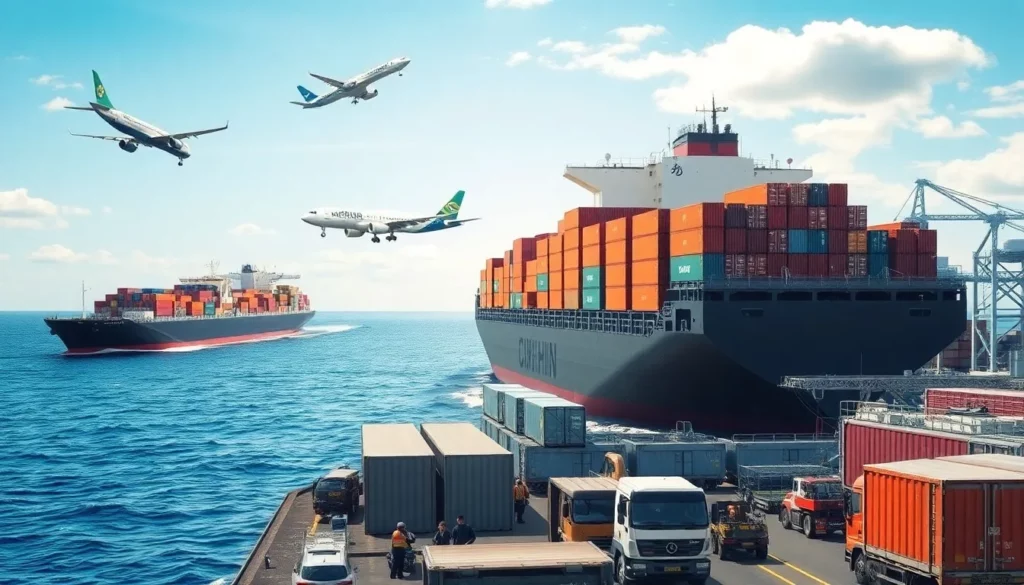Finding the right shipping solution from China to Ireland can significantly impact your import operations and bottom line. This comprehensive guide examines four primary shipping methods—air freight, sea freight, rail freight, and express courier services—while breaking down real costs, transit times, and business applications. You’ll discover how to calculate total landed costs including Irish customs duties and VAT, navigate essential documentation requirements, and select freight forwarders with proven China-Ireland expertise to optimize your supply chain efficiency.
Reliable shipping from China to Ireland involves choosing between air freight (3-7 days), sea freight (30-40 days), rail freight (25 days), and express courier services (3-5 days), with costs ranging from $300-400 per cubic meter for LCL to $5-10 per kilogram for express delivery.
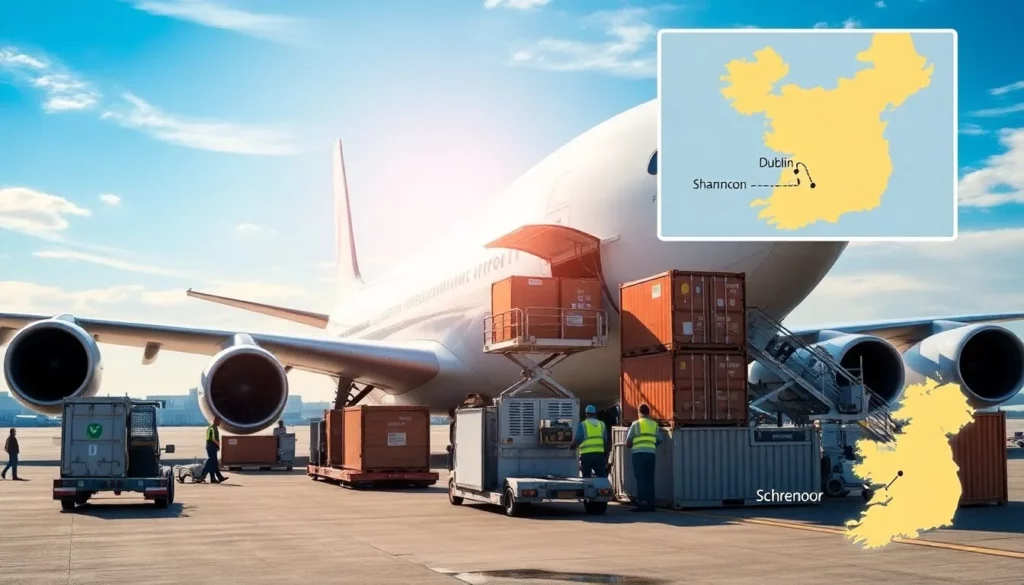
Key Shipping Methods
Air Freight: For Speed and High-Value Cargo
Air freight represents the fastest shipping method for businesses requiring rapid inventory replenishment or handling time-sensitive products. This mode typically delivers goods from major Chinese airports to Dublin or Shannon within 3-7 days.
Major Chinese departure points include Shanghai Pudong, Guangzhou Baiyun, and Shenzhen Bao’an airports, connecting directly to Dublin Airport as Ireland’s primary international gateway. These established routes ensure consistent service availability for importers.
When to Choose Air Freight for Your Business Imports
Air freight becomes cost-effective when your shipment exceeds 100-150 kilograms, making it more attractive than express courier services for medium-sized cargo. The reliability of scheduled flights provides predictable transit times essential for just-in-time inventory management.
Businesses handling high-value, low-volume products find air freight particularly suitable due to its security features and reduced handling requirements compared to sea freight. Temperature-controlled options accommodate pharmaceutical and perishable goods requiring specific storage conditions.
Major Air Freight Routes and Key Airports
Shanghai to Dublin represents the most frequent air freight route, with direct connections facilitating smooth cargo flow. Secondary routes through Guangzhou and Shenzhen provide alternative options during peak seasons or capacity constraints.
Shannon Airport serves as a secondary gateway, particularly useful for businesses located in western Ireland or seeking reduced Dublin port congestion. Both airports maintain customs clearance facilities capable of handling commercial imports efficiently.
Air Freight Transit Times
Standard air freight typically requires 5-7 days door-to-door, including customs clearance and ground transportation to final destinations. Express air cargo reduces this timeframe to 3-5 days by prioritizing cargo handling and utilizing dedicated aircraft space.
Transit time variations depend on flight schedules, customs processing efficiency, and final destination within Ireland. Urban deliveries to Dublin or Cork typically complete faster than rural locations requiring additional ground transportation.
Air Freight Cost Calculation
Air freight pricing utilizes chargeable weight, calculated as the greater of actual weight or volumetric weight (length × width × height ÷ 6000). Current rates average $4-6 per kilogram for standard service, with express options reaching $5-10 per kilogram.
Additional surcharges include fuel adjustments, security fees, and terminal handling charges that can add 15-25% to base rates. Seasonal fluctuations during Chinese New Year and Christmas periods typically increase rates by 20-30%.
Ideal for E-commerce (fast restock), High-Tech (security), Perishables
E-commerce sellers benefit from air freight’s speed for rapid inventory replenishment, particularly during promotional periods or stockouts. The ability to respond quickly to market demands justifies higher transportation costs for many online retailers.
High-tech manufacturers choose air freight for valuable electronics requiring secure handling and reduced theft exposure. Temperature-sensitive pharmaceuticals and food products rely on controlled environments available through specialized air cargo services.
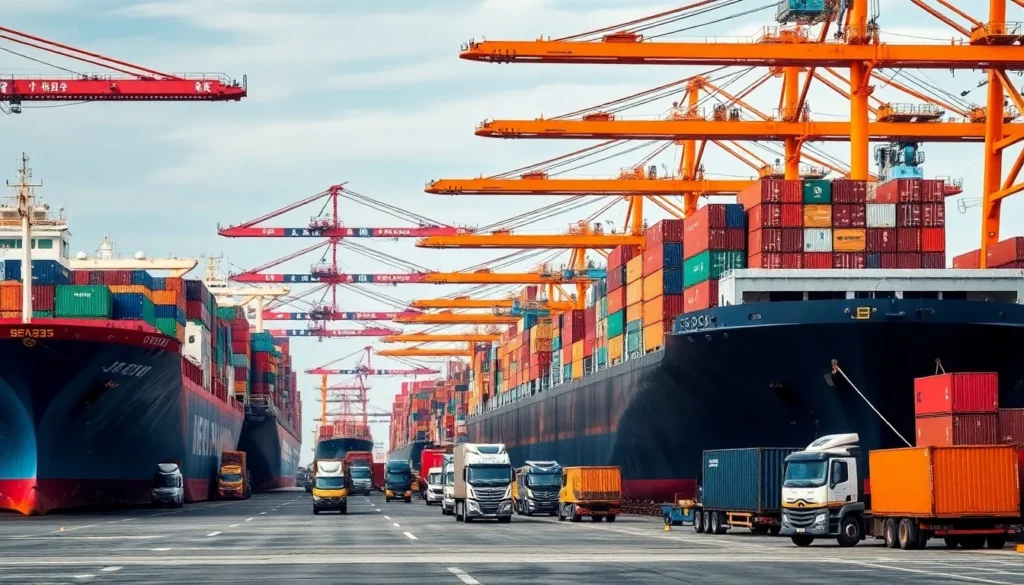
Sea Freight: The Cost-Effective Solution for Bulk Shipments
Sea freight dominates China-Ireland trade volume, offering the most economical solution for large shipments despite longer transit times. This method suits businesses prioritizing cost savings over speed for regular inventory movements.
Ocean routes connect major Chinese ports including Shanghai, Shenzhen, and Ningbo to Dublin and Cork, Ireland’s primary commercial ports. These established shipping lanes provide reliable service with multiple sailing options weekly.
When Sea Freight is the Right Choice for Your Business
Sea freight becomes optimal when shipping costs represent a significant portion of product value, typically for lower-value, higher-volume goods. Businesses with predictable demand patterns can utilize longer transit times for inventory planning purposes.
Non-urgent shipments including furniture, textiles, and industrial equipment benefit from sea freight’s capacity to handle oversized or heavy items. Seasonal businesses can leverage extended transit times to pre-position inventory for peak selling periods.
FCL (Full Container Load) vs. LCL (Less than Container Load)
Full Container Load (FCL) provides exclusive container use, costing $2,000-3,000 for 20-foot containers and $4,000-5,000 for 40-foot containers from China to Ireland. FCL suits businesses shipping 15+ cubic meters of cargo or requiring enhanced security.
Less than Container Load (LCL) allows sharing container space with other shippers, charging $300-400 per cubic meter with 30-40 day transit times. LCL benefits smaller importers lacking sufficient volume for dedicated containers.
| Container Type | Cost Range | Transit Time | Best For |
|---|---|---|---|
| 20ft FCL | $2,000-$3,000 | 30-40 days | 15-25 CBM shipments |
| 40ft FCL | $4,000-$5,000 | 30-40 days | 25-65 CBM shipments |
| LCL | $300-$400/CBM | 30-40 days | Under 15 CBM shipments |
Major Sea Ports
Shanghai Port handles the largest volume of China-Ireland trade, offering multiple weekly sailings to Dublin Port. The 20,500-kilometer route typically requires 30-35 days transit time under normal conditions.
Shenzhen Port provides southern China access with 32-37 day transit times to Dublin, while Ningbo offers alternative departure options with 31-36 day schedules. Cork Port serves as Ireland’s secondary gateway, particularly useful for southern Ireland deliveries.
Estimated Sea Freight Transit Times: Port-to-Port vs. Door-to-Door
Port-to-port transit typically requires 20-30 days between major Chinese and Irish ports. Door-to-door service extends this timeframe to 30-40 days, including inland transportation and customs clearance procedures.
Additional time considerations include port congestion during peak seasons, weather delays, and customs inspection requirements. Planning should account for 5-7 additional days during Chinese New Year and European holiday periods.
Ideal for Large Retailers, Manufacturers, SMEs with large stock orders
Large retailers utilize sea freight for seasonal inventory builds, particularly for home goods, clothing, and consumer electronics requiring substantial volume movements. The cost savings justify extended lead times for predictable demand patterns.
Manufacturers importing raw materials or components benefit from sea freight’s capacity and cost-effectiveness for production planning. Small and medium enterprises can access global suppliers through LCL services without requiring full container volumes.
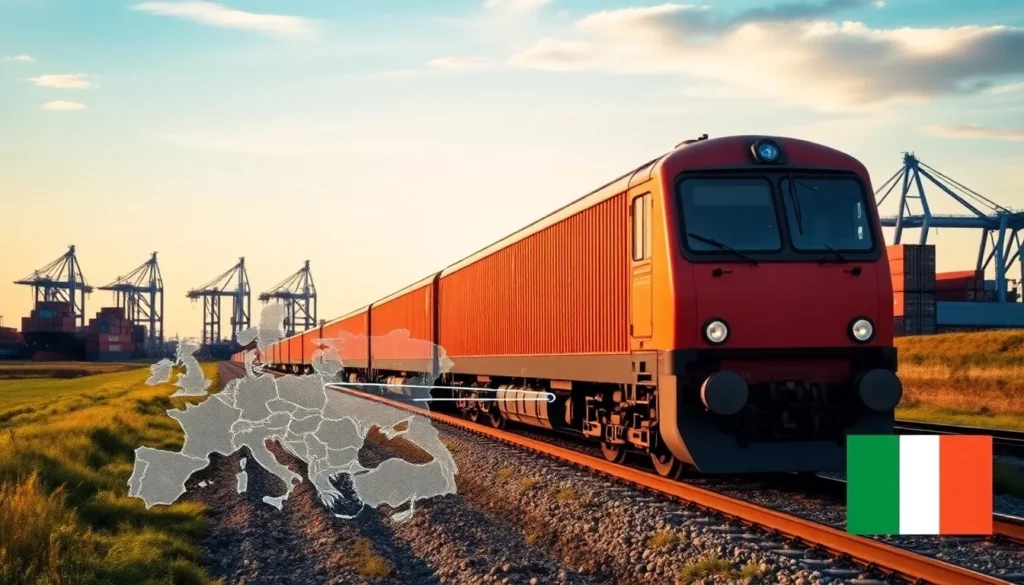
Rail Freight: A Balanced Alternative
Rail freight offers a compromise between sea freight’s cost-effectiveness and air freight’s speed, typically completing China-Ireland journeys in 25 days. This emerging option provides environmental benefits while reducing supply chain risks.
The China-Europe rail network connects major Chinese cities to European terminals, requiring additional transportation to reach Ireland. Recent developments include full-time schedule trains improving reliability and predictability for business planning.
Viability of China-Europe Rail for Irish Imports
European rail terminals in Germany and Netherlands provide access points for Irish imports requiring additional sea or road transportation. The 10-day, 20-hour journey from Xi’an to Duisburg demonstrates rail freight’s potential for time-sensitive cargo.
Rail freight suits medium-value products requiring faster delivery than sea freight but not justifying air freight costs. Environmental sustainability goals drive some businesses toward rail options despite logistical complexity.
Comparing Rail vs. Sea and Air on Cost, Speed, Reliability
Rail freight costs typically fall between sea and air freight rates, offering moderate pricing for balanced service. Speed advantages over sea freight make rail attractive for inventory management while maintaining cost controls.
Reliability improvements through scheduled services reduce uncertainty compared to traditional rail freight. Weather independence provides advantages over sea freight during storm seasons affecting ocean routes.
Typical Rail Freight Transit Times and Key Terminals
Standard rail freight from China to European terminals requires 10-15 days, with additional 3-5 days for Ireland delivery. Key terminals include Duisburg, Hamburg, and Rotterdam providing onward connections to Irish ports.
Service frequency limitations compared to sea and air freight require advance planning for consistent supply chain management. Peak season capacity constraints may necessitate alternative shipping methods during high-demand periods.
Limitations for Shipments to Ireland
Ireland’s island location requires intermodal transportation combining rail and sea freight, adding complexity to logistics planning. Additional handling increases costs and extends transit times compared to continental European destinations.
Limited service providers and route options reduce flexibility compared to sea and air freight alternatives. Customs procedures at multiple borders may complicate documentation requirements for Irish importers.
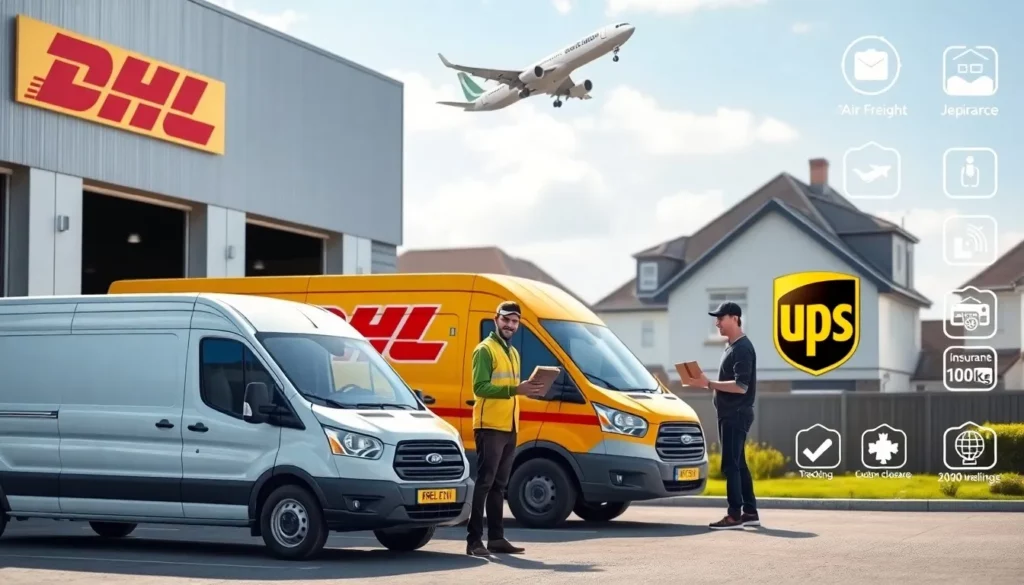
Express Courier Services: The Fastest Door-to-Door Option
Express courier services provide the fastest shipping option from China to Ireland, typically delivering within 3-5 days door-to-door. Major providers including DHL, FedEx, and UPS offer comprehensive tracking and customs clearance services.
These services excel for small, urgent shipments under 100 kilograms requiring immediate delivery. Integrated customs brokerage eliminates complexity for businesses lacking import expertise or EORI registration.
Key Providers and Service Levels (DHL, FedEx, UPS)
DHL dominates European express delivery with extensive China-Ireland networks and local customs expertise. FedEx provides competitive options particularly for technology and pharmaceutical shipments requiring specialized handling.
UPS offers comprehensive logistics solutions including warehousing and distribution services beyond transportation. Each provider maintains different strengths in pricing, transit times, and service coverage across Ireland.
Why Choose Express: Simplicity and Speed for Small Shipments
Express services eliminate freight forwarder requirements through integrated door-to-door solutions. Customs clearance inclusion simplifies import procedures for businesses lacking dedicated trade expertise.
Tracking capabilities provide real-time visibility essential for urgent shipments or high-value products. Insurance coverage and delivery guarantees reduce risk for critical business shipments.
Comparing Express vs. Standard Air Freight: What’s the Difference?
Express courier services include customs clearance, door-to-door delivery, and comprehensive tracking in single pricing. Standard air freight requires separate arrangements for customs brokerage and final delivery services.
Cost differences become significant for larger shipments, with air freight becoming more economical above 100-150 kilograms. Express services provide faster customs clearance through established procedures and dedicated facilities.
Transit Times (3-7 days) and Cost Structure
Express delivery typically completes within 3-5 working days from pickup to delivery. Premium services offer next-day or two-day delivery for critical shipments at substantially higher costs.
Integrated pricing includes transportation, customs clearance, duties, taxes, and delivery in single quotes. This simplifies budgeting compared to air freight requiring separate service provider coordination.
Best for Samples, Documents, and Urgent E-commerce Orders
Product samples for quality approval or trade show participation benefit from express delivery speed and reliability. Critical documents including contracts, certificates, and regulatory submissions require express service guarantees.
E-commerce businesses utilize express services for urgent inventory replenishment or customer service replacements. High-value, low-weight products justify express costs through reduced inventory carrying requirements.
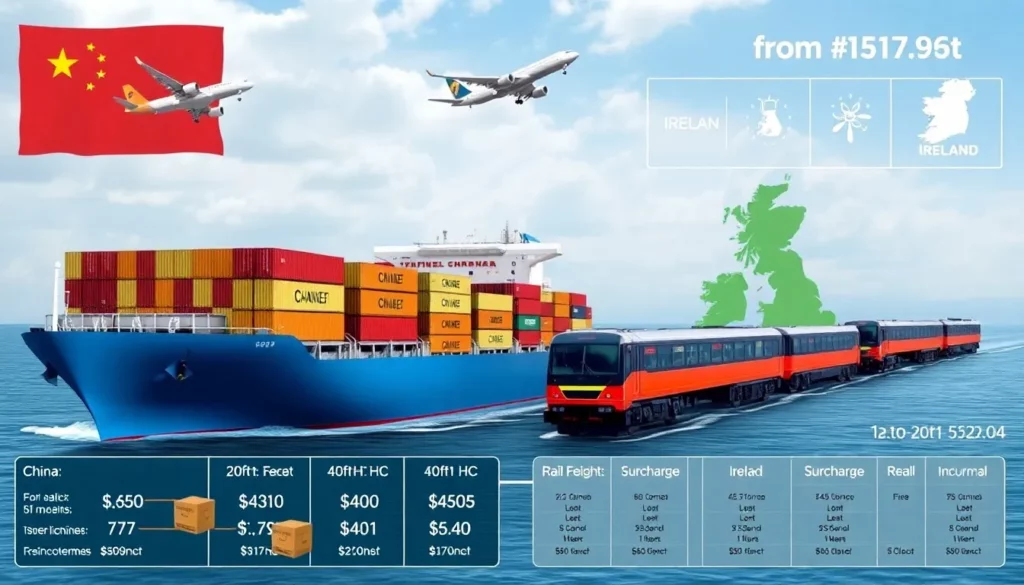
Shipping Costs from China to Ireland
Core Factors That Determine Your Total Shipping Cost
Understanding shipping cost components enables accurate budgeting and supplier negotiations for China-Ireland trade. Multiple variables interact to determine final delivered costs requiring comprehensive analysis.
Base freight rates represent only one component of total shipping expenses. Additional charges including fuel surcharges, terminal fees, and customs duties significantly impact total costs.
Base Freight Rates for Air, Sea, and Rail
Air freight rates currently average $4.40 per kilogram for shipments over 1,000 kilograms from China to Ireland. Express courier services charge $5-10 per kilogram depending on service level and delivery timeframe.
Sea freight costs $2,300 for 20-foot containers and $3,400 for 40-foot containers to Dublin in June 2025. LCL shipments cost $300-400 per cubic meter with stable pricing throughout the year.
Rail freight pricing falls between sea and air rates, though limited service availability affects competitive pricing. Additional intermodal transportation costs for Ireland delivery increase total rail freight expenses.
Impact of Container Type and Size (20ft, 40ft, 40ft HC)
Container selection significantly affects unit costs and capacity utilization for sea freight shipments. Standard 20-foot containers accommodate 25-28 cubic meters while 40-foot containers handle 56-58 cubic meters.
High cube (HC) 40-foot containers provide additional height for light, bulky cargo maximizing space utilization. Container choice depends on cargo characteristics, volume requirements, and port handling capabilities.
Cost per cubic meter decreases with larger containers, making 40-foot options economical for higher volume shipments. Weight restrictions may limit container utilization for dense products regardless of size selection.
Shipment Weight and Volume Affect Pricing
Air freight utilizes chargeable weight calculations comparing actual and volumetric weight. Volumetric weight equals length × width × height ÷ 6000, with higher value determining final pricing.
Sea freight pricing depends primarily on container utilization rather than weight for standard cargo. Overweight containers incur additional charges when exceeding port handling equipment limitations.
Express courier services employ similar chargeable weight calculations with lower divisor factors increasing volumetric weight impact. Dense, heavy products benefit from weight-based pricing while light, bulky items pay volumetric rates.
The Role of Incoterms (EXW, FOB, CIF, DDP) in Cost Allocation
Incoterms define responsibility allocation between buyers and sellers for transportation, insurance, and customs clearance costs. EXW (Ex Works) places maximum responsibility on buyers for all logistics arrangements.
FOB (Free on Board) includes Chinese export costs with buyers handling international transportation and Irish import procedures. CIF (Cost, Insurance, Freight) adds sea freight and marine insurance to seller responsibilities.
DDP (Delivered Duty Paid) provides complete door-to-door service with sellers handling all costs including Irish duties and taxes. Incoterm selection significantly impacts total cost structures and risk allocation.
Fuel Surcharges and Seasonal Price Fluctuations
Fuel surcharges fluctuate based on oil prices and carrier policies, typically adding 10-20% to base freight rates. Air freight shows higher sensitivity to fuel costs compared to sea freight operations.
Seasonal demand affects pricing during Chinese New Year, European summer holidays, and Christmas periods. Peak season surcharges can increase rates by 25-50% for air freight and 15-25% for sea freight.
Advance booking and flexible timing help minimize seasonal impact on shipping costs. Long-term contracts with freight forwarders provide rate stability during volatile periods.
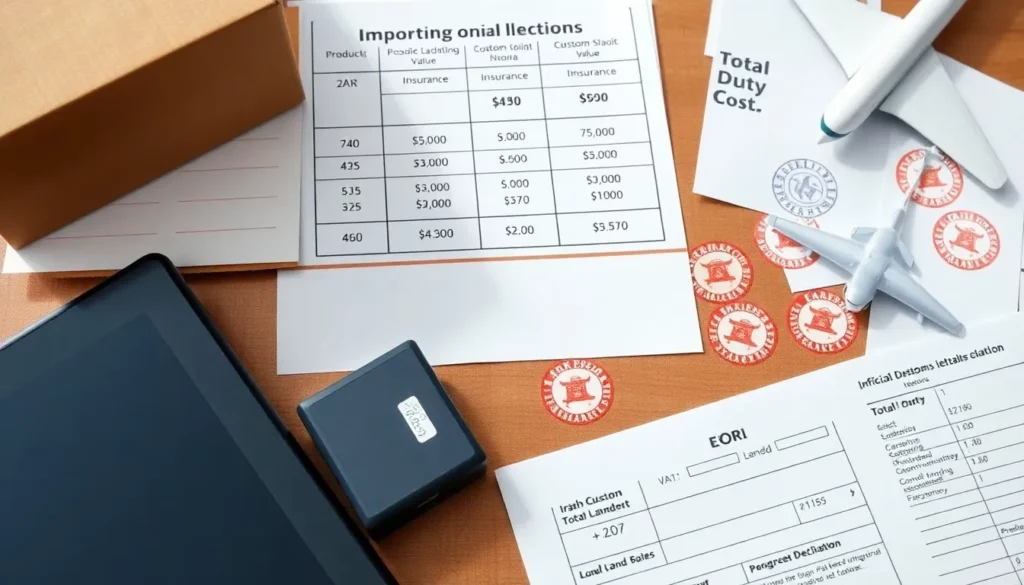
Calculating Irish Customs Duties, VAT, and Import Taxes
Irish customs procedures follow EU regulations requiring proper classification and duty calculation for all commercial imports. Understanding tax obligations prevents unexpected costs and clearance delays.
Importers must obtain Economic Operators Registration and Identification (EORI) numbers before filing customs declarations. This system provides unique reference numbers for customs authority interactions throughout the EU.
Step-by-Step Guide to Calculating VAT on Imported Goods
Irish VAT applies at 23% on most imported goods calculated on total value including product cost, shipping charges, insurance, and customs duties. The formula is: (Product Value + Shipping + Insurance + Customs Duty) × 23%.
VAT calculation begins with accurate product valuation using invoice amounts or customs value determination methods. Shipping and insurance costs must include all transportation expenses from Chinese suppliers to Irish destinations.
Customs duty amounts add to the VAT calculation base, creating compounding effects on total tax liability. Certain products qualify for reduced VAT rates including books, food, and medical equipment.
HS Codes to Determine Customs Duty Rates
Harmonized System (HS) codes classify products for customs duty determination using six-digit international standards. Irish Revenue utilizes TARIC database for detailed tariff information including duty rates and special conditions.
Product classification requires analyzing product characteristics, intended use, and manufacturing materials. Incorrect classification leads to duty adjustments and potential penalties requiring professional customs brokerage assistance.
Duty rates vary significantly by product category, with industrial goods averaging 5-8% and specific products reaching 12%. Most raw materials enter duty-free or at reduced rates supporting manufacturing activities.
EORI Number for Irish Businesses
All businesses importing commercial goods into Ireland require EORI registration through Irish Revenue authorities. Registration is free and typically completed within 5-10 business days for eligible applicants.
EORI numbers enable customs declaration filing and duty payment processing throughout the EU. Without valid EORI registration, customs authorities cannot release imported goods causing significant delays.
The application requires business registration details, VAT numbers, and authorized representative information. Online registration through Revenue.ie provides fastest processing compared to paper applications.
Example of a Total Landed Cost Calculation
The table below shows a step-by-step calculation for importing $10,000 worth of electronics into Ireland by air freight. All associated costs—freight, insurance, customs duty, VAT, and local charges—are included to determine the true landed cost:
| Item | Amount ($) |
|---|---|
| Product Value | 10,000 |
| Air Freight | 2,000 |
| Insurance | 200 |
| Customs Duty (12%) | 1,200 |
| VAT Calculation Base | 13,400 |
| Irish VAT (23%) | 3,082 |
| Subtotal | 16,482 |
| Customs Brokerage | 150 |
| Terminal Handling | 100 |
| Inland Delivery | 250 |
| Total Landed Cost | 16,982 |
| Markup Over Product (%) | 64.8% |
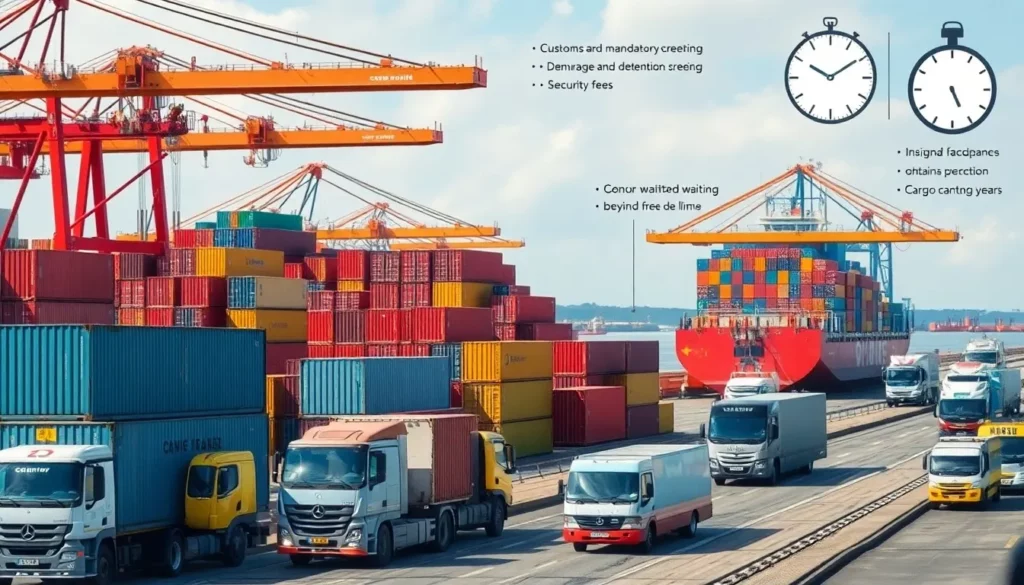
Hidden and Additional Shipping Fees
Beyond basic freight rates, numerous additional charges affect total shipping costs from China to Ireland. Understanding these fees prevents budget surprises and enables accurate cost comparisons.
Port authorities, shipping lines, and service providers impose various surcharges for handling, security, and administrative services. These charges often appear separately from base freight quotes requiring careful analysis.
Common Surcharges: Terminal Handling, Customs Brokerage, and Security Fees
Terminal handling charges range from $150-300 per container covering port operations including loading, unloading, and temporary storage. Air freight terminals impose similar charges typically included in base rates.
Customs brokerage services cost $150-500 depending on shipment complexity and required documentation. Professional brokers ensure compliance while handling customs declaration preparation and submission.
Security fees cover mandatory screening procedures required for international shipments. These charges typically appear as percentage surcharges on base freight rates rather than fixed amounts.
Demurrage and Detention: How to Avoid Unexpected Port Penalties
Demurrage charges apply when containers remain at ports beyond free time allowances, typically 5-7 days for imports. Daily rates range from $75-300 per container with escalating charges for extended delays.
Detention fees occur when containers stay with consignees beyond agreed pickup timeframes. Prompt cargo collection and empty container return prevent these additional charges.
Pre-clearance arrangements and efficient documentation preparation minimize port storage time. Coordinating delivery schedules with customs clearance prevents demurrage accumulation.
The Importance and Cost of Cargo Insurance
Marine cargo insurance protects against loss, damage, and theft during international transportation. Insurance costs typically range from 0.1-0.5% of cargo value depending on route, cargo type, and coverage level.
All-risk coverage provides comprehensive protection including weather damage, handling errors, and theft. Basic coverage excludes certain perils requiring careful policy analysis for adequate protection.
Insurance claims require proper documentation including surveys, photos, and shipping records. Professional insurance arrangement through experienced brokers ensures appropriate coverage and claims support.
Inland Transportation Costs at Origin and Destination
Chinese inland transportation from factories to departure ports costs $200-800 depending on distance and cargo requirements. Major manufacturing centers offer competitive trucking rates due to high service provider density.
Irish delivery costs from ports to final destinations range from $150-500 based on location and cargo characteristics. Urban deliveries cost less than rural locations requiring extended transportation.
Express courier services include door-to-door delivery in base pricing eliminating separate inland transportation arrangements. This integration simplifies logistics but may increase total costs for larger shipments.

Step-by-Step International Shipping Process
Essential Documentation for Smooth Customs Clearance
Proper documentation ensures efficient customs clearance and prevents costly delays at Irish borders. Chinese exports require specific documentation sets varying by product type and destination requirements.
Customs authorities examine documents for accuracy, completeness, and compliance with import regulations. Missing or incorrect information triggers inspections and potential penalties affecting delivery schedules.
Commercial Invoice and Packing List Requirements
Commercial invoices must include complete buyer and seller information, product descriptions, quantities, values, and payment terms. Invoice accuracy directly affects customs duty calculations and VAT assessments.
Detailed product descriptions satisfy customs classification requirements using plain English terminology. Generic descriptions like “goods” or “samples” cause clearance delays requiring additional documentation.
Packing lists identify individual packages with weights, dimensions, and contents enabling customs verification. Sequential numbering and clear marking facilitate efficient inspection processes when required.
The Bill of Lading (B/L) for Sea Freight
Bills of lading serve as shipping contracts, cargo receipts, and ownership documents for sea freight shipments. Original bills of lading are required for cargo release at destination ports.
Consignee information must match customs declarations and banking documents exactly. Discrepancies between documents cause release delays requiring corrections and additional processing time.
Electronic bills of lading are increasingly accepted reducing document transmission time and loss risks. Digital systems improve processing efficiency while maintaining legal document requirements.
The Air Waybill (AWB) for Air Freight
Air waybills provide shipping contracts and tracking references for air cargo shipments. Unlike bills of lading air waybills are non-negotiable documents facilitating faster customs clearance.
Master air waybills cover shipments from airlines to freight forwarders while house air waybills identify individual consignments. Both documents are required for complete customs clearance processing.
Electronic air waybills enable real-time tracking and status updates throughout transportation. Digital documentation reduces processing time and improves shipment visibility for importers.
Certificate of Origin and Other Required Certificates
Certificates of origin verify product manufacturing location for customs duty determination. Chinese authorities issue certificates through chambers of commerce and trade promotion organizations.
Special certificates may be required for specific products including food safety quality standards regulatory compliance documentation. Product-specific requirements vary by Irish import regulations and EU standards.
Certificate costs typically range from $50-200 depending on issuing authority and processing timeframes. Expedited processing is available for urgent shipments at additional costs.
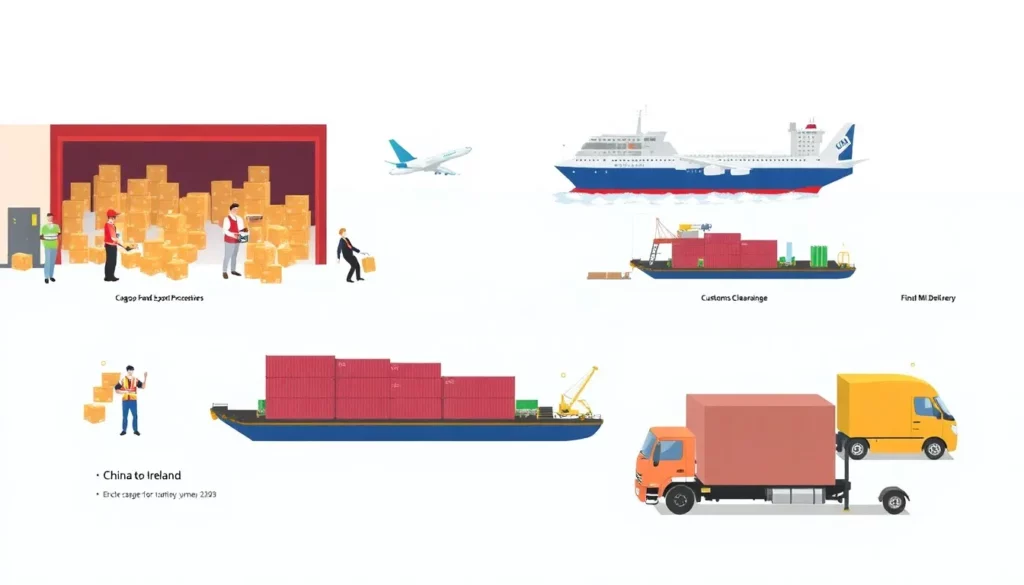
The China-to-Ireland Shipping Journey
Understanding the complete shipping process helps businesses plan logistics manage expectations international transportation Each stage involves specific procedures potential delay points
Professional freight forwarders coordinate multiple service providers ensuring smooth transitions between transportation modes customs procedures This coordination becomes critical complex international shipments
Stage 1: Cargo Pickup Export Procedures in China
Chinese export procedures begin cargo collection supplier factories warehouses Freight forwarders arrange appropriate transportation departure terminals based selected shipping methods
Export declarations must filed Chinese customs authorities including product classification values destination information Commercial shipments require proper invoicing regulatory compliance verification
Quality control inspections may conducted origin ensure product compliance Irish import standards Pre-shipment inspections reduce clearance delays rejection risks destination
Stage 2: Transit via Air Sea Rail
Transportation duration varies significantly selected method air freight completing in 3-7 days sea freight requiring 30-40 days rail options taking approximately 25 days Weather conditions operational delays affect actual transit times
Cargo tracking enables real-time status monitoring throughout transportation Modern logistics systems provide milestone updates including departure confirmations transit progress arrival notifications
Intermodal transportation may required rail freight involving multiple carriers border crossings Additional complexity requires careful coordination documentation management
Stage 3: Customs Clearance upon Arrival in Ireland
Irish customs clearance involves document examination duty calculation release authorization Electronic systems enable advance processing reducing clearance time compliant shipments
Physical inspections may conducted risk assessment random verification purposes Inspection selection depends cargo type origin country customs authority priorities
Duty tax payment must completed before cargo release authorization Electronic payment systems expedite processing compared traditional payment methods
Stage 4: Final Mile Delivery Your Business Location
Final delivery arrangements depend selected service levels destination requirements Door-to-door services provide complete delivery port-to-port options require customer collection
Delivery scheduling coordination ensures recipient availability cargo acceptance unloading Special equipment may required heavy oversized shipments
Proof delivery documentation provides confirmation successful shipment completion Electronic signatures photo documentation verify final delivery accomplishment
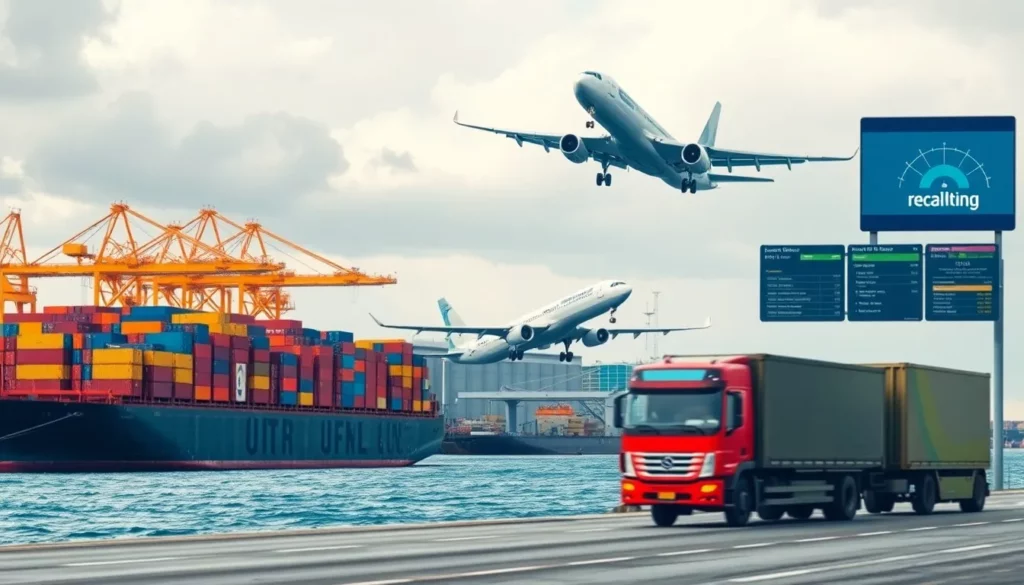
Managing Transit Times Tracking Your Shipment
Accurate transit time estimation enables effective inventory planning customer service management Multiple factors affect delivery schedules requiring buffer time allocation
Professional tracking systems provide visibility throughout transportation process enabling proactive issue resolution Real-time updates help businesses manage customer expectations plan receiving operations
Realistic Transit Time Expectations Each Shipping Method
Express courier services typically deliver within 3-5 business days limited variability Premium services offer guaranteed delivery times compensation delays
Air freight requires 5-10 days including customs clearance ground transportation Expedited services reduce transit time 3-5 days premium pricing
Sea freight averages 30-40 days may extend 45-50 days during peak seasons adverse weather Container availability port congestion affect sailing schedules
Common Delays: Port Congestion, Customs Holds, Weather
Port congestion during peak seasons causes vessel delays extended waiting times Chinese New Year Christmas periods create capacity constraints affecting schedules
Customs holds occur document discrepancies random inspections regulatory compliance verification Proper documentation preparation minimizes hold risks processing delays
Weather disruptions including typhoons storms extreme temperatures affect transportation schedules Seasonal planning accounts weather-related delays vulnerable periods
Effectively Tracking Your Cargo
Electronic tracking systems provide real-time status updates throughout transportation process Multiple checkpoint confirmations verify cargo progress identify potential delays early
Proactive communication with freight forwarders ensures rapid issue resolution problems arise Regular status updates help businesses manage customer expectations plan operations
Documentation preparation customs compliance verification shipment reduces clearance delays Professional customs brokerage services ensure regulatory compliance smooth processing
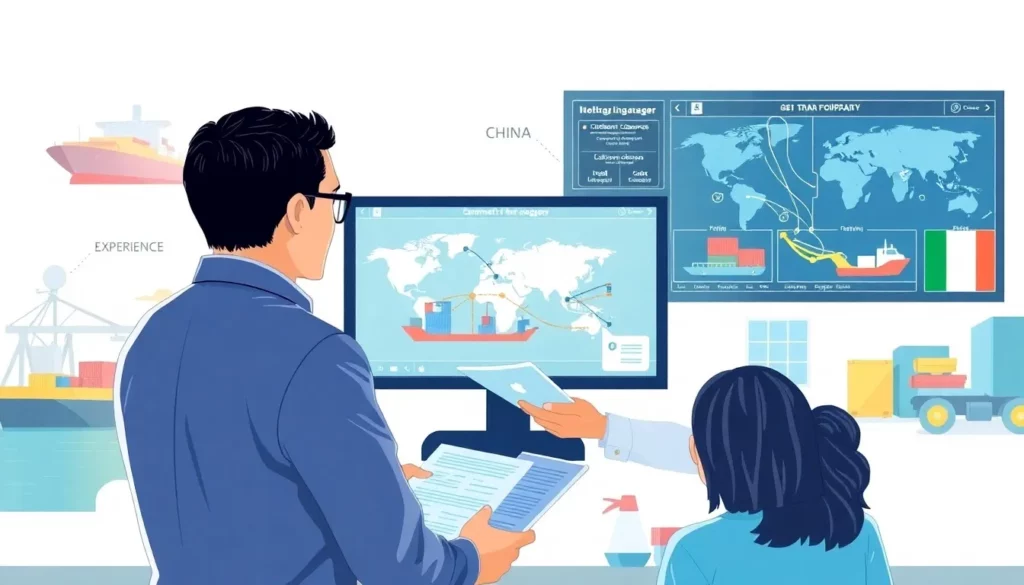
Choose the Right Shipping Service
Evaluating Selecting Freight Forwarder
Selecting appropriate freight forwarders significantly impacts shipping success cost control customer satisfaction Multiple evaluation criteria help identify suitable logistics partners China-Ireland trade
Experienced forwarders provide valuable guidance shipping methods documentation requirements regulatory compliance Local knowledge established relationships facilitate smooth operations issue resolution
Key Criteria Verifying Experience China-Ireland Route
Route-specific experience demonstrates understanding unique challenges opportunities China-Ireland trade Established relationships carriers agents authorities enable efficient problem resolution
Reference checking existing customers provides insights service quality reliability customer support capabilities Industry reputation financial stability indicate long-term viability logistics partners
Volume commitments preferred carrier relationships enable competitive pricing capacity allocation peak periods Large forwarders often secure better rates consolidated shipping volumes
Assessing Forwarder’s Customs Clearance Expertise Ireland
Irish customs expertise ensures compliance EU regulations efficient clearance procedures Licensed customs brokers provide professional declaration preparation regulatory guidance
Technology capabilities including electronic filing tracking systems improve processing efficiency visibility Modern systems enable real-time status updates proactive issue management
Regulatory update services keep importers informed changing requirements compliance obligations Professional guidance prevents costly errors clearance delays affecting business operations
Communication, Support, Tracking Technology
Communication capabilities including multilingual support local presence facilitate effective coordination Time zone coverage ensures responsive customer service throughout shipping process
Technology platforms providing tracking documentation billing integration streamline logistics management User-friendly systems reduce administrative burden improving operational efficiency
Emergency support contingency planning capabilities help manage unexpected disruptions Professional crisis management minimizes business impact transportation problems occur
Comparing Quotes Looking Beyond Price Overall Value
Comprehensive quote analysis considers total landed costs including duties taxes additional services Hidden charges service limitations affect true shipping costs requiring careful evaluation
Service level comparisons examine transit times tracking capabilities insurance coverage customer support Premium services may justify higher costs reduced risk improved reliability
Contract terms including liability limits claim procedures dispute resolution mechanisms affect risk allocation Professional service agreements provide protection clear expectations both parties
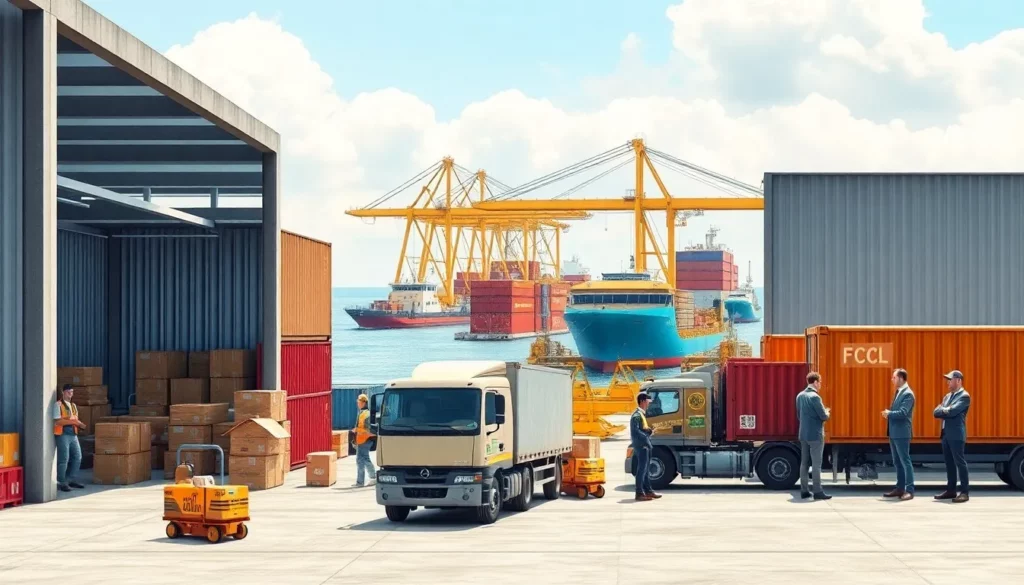
Tailoring Shipping Strategies Different Business Models
Business model characteristics determine optimal shipping strategies cost control customer satisfaction Different approaches suit varying volume requirements timing needs risk tolerance levels
Strategic shipping planning aligns logistics decisions business objectives including inventory management customer service financial performance Integrated planning optimizes total supply chain costs rather individual shipping expenses
For E-commerce Sellers Balancing Speed Cost Market Demands
E-commerce businesses require flexible shipping options accommodating varying order sizes customer expectations Express services handle urgent orders sea freight manages bulk inventory replenishment
Inventory positioning strategies using Irish warehouses reduce delivery times customers enabling economic sea freight stock replenishment Local fulfillment improves customer satisfaction reduces shipping costs
Seasonal planning utilizing extended sea freight transit times enables inventory build-up peak selling periods Advanced planning prevents capacity constraints premium pricing high-demand seasons
For Large Importers Optimizing FCL Shipments Supply Chain Management
Large importers benefit dedicated container shipments providing cost efficiency security advantages Full container loads enable better cargo control reduced handling requirements
Supply chain integration coordinates shipping schedules production planning inventory management Predictable delivery schedules enable just-in-time operations reduced working capital requirements
Contract logistics arrangements with freight forwarders provide rate stability capacity guarantees Long-term partnerships enable customized solutions continuous improvement initiatives
For SMEs Using LCL Consolidation Maximize Cost-Efficiency
Small medium enterprises utilize LCL services cost-effective shipping without full container requirements Shared container costs enable global sourcing businesses limited volumes
Consolidation services combining multiple suppliers reduce individual shipping costs maintaining delivery flexibility Professional consolidation management ensures efficient cargo coordination documentation
Flexible payment terms credit arrangements help SMEs manage cash flow accessing international suppliers Financial services integration simplifies logistics reduces administrative complexity
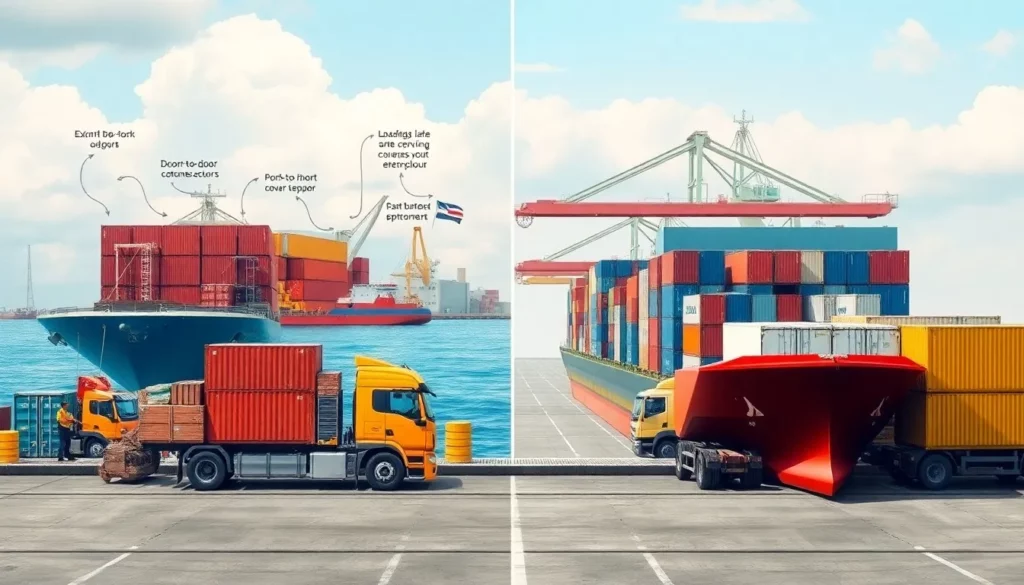
Deciding Between Door-to-Door Port-to-Port Services
Service level selection affects cost structures convenience risk allocation international shipments Different options suit varying business capabilities logistics requirements
Door-to-door services provide complete logistics solutions port-to-port options offer cost savings businesses internal logistics capabilities Service selection depends cost sensitivity operational complexity tolerance
What Comprehensive Door-to-Door Service Includes
Door-to-door services encompass cargo pickup export procedures international transportation customs clearance final delivery Complete service integration eliminates coordination requirements reduces complexity
Documentation preparation including commercial invoices shipping documents customs declarations handled service providers Professional documentation ensures compliance efficient processing
Tracking customer service provide visibility support throughout shipping process Single-point contact simplifies communication issue resolution importers
When Port-to-Port Port-to-Door Service More Practical
Port-to-port services suit businesses established logistics capabilities local transportation arrangements Cost savings may justify additional coordination requirements experienced importers
Port-to-door services combine international transportation local delivery requiring shipper export arrangements Option balances cost savings convenience certain business situations
Customs clearance expertise requirements may necessitate professional brokerage services regardless transportation arrangements Compliance obligations remain constant different service levels
Making Right Choice Based Your In-House Logistics Capabilities
Internal logistics expertise resources determine appropriate service level selection Businesses experienced trade personnel may benefit port-to-port cost savings
Risk tolerance error consequences affect service selection decisions High-value time-sensitive shipments often justify comprehensive door-to-door services despite higher costs
Cost-benefit analysis comparing service premiums internal resource requirements guides optimal selection Total cost consideration includes time expertise risk factors beyond transportation charges
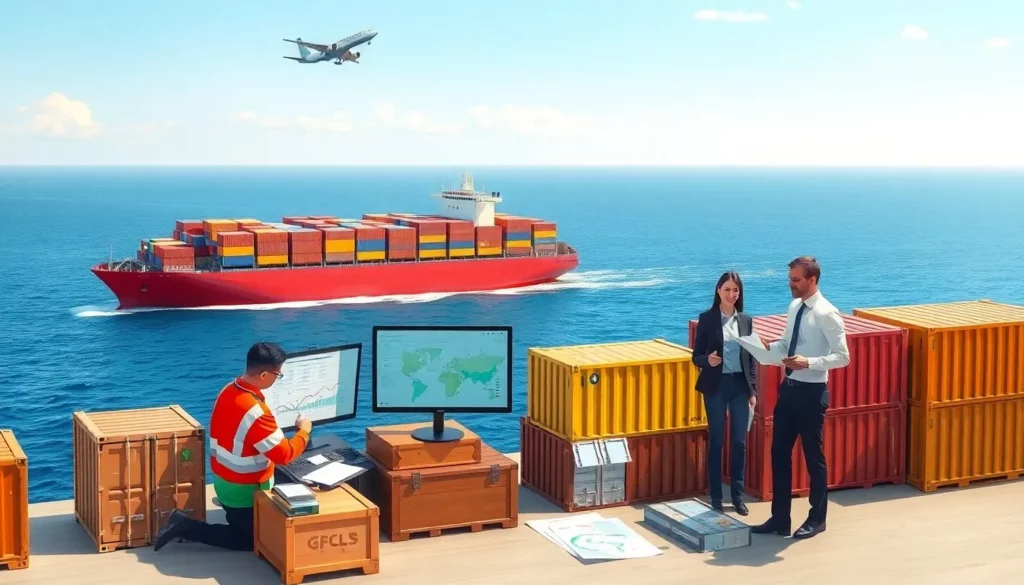
Conclusion:
Successful China-Ireland shipping requires careful method selection based cost timing cargo characteristics Air freight serves urgent needs sea freight optimizes costs bulk shipments
Total landed cost calculation including duties taxes additional fees enables accurate pricing profitability analysis Professional customs brokerage ensures compliance minimizing clearance delays penalties
Experienced freight forwarders provide valuable expertise route optimization regulatory compliance cost management Strategic partnerships enable customized solutions aligned specific business requirements operational constraints
Professional logistics support reduces complexity improving efficiency reliability Long-term relationships facilitate continuous improvement adaptation changing business needs market conditions
Frequently Asked Questions (FAQs) Shipping from China to Ireland
1. What most cost-effective shipping method small business importing China Ireland?
LCL sea freight offers most economical option small businesses costing $300-$400 per cubic meter with 30-40 day transit times This method enables global sourcing without full container volume requirements
2. How accurately calculate total landed cost including duties taxes goods?
Total landed cost equals product value plus shipping insurance customs duty (typically 5-12%) Irish VAT at 23% calculated combined amount Professional customs brokerage ensures accurate calculations compliance
3. What most common reasons customs delays Ireland how avoid?
Document discrepancies incorrect product classifications incomplete declarations cause most delays Proper HS code classification accurate invoicing professional customs brokerage minimize clearance problems
4. Do absolutely need EORI number import commercial goods Ireland China?
Yes all commercial importers require EORI registration through Irish Revenue authorities Registration free typically completed within 5-10 business days eligible business applicants
5. What difference FOB DDP Incoterms which better first-time importer?
FOB requires buyers handle international transportation Irish import procedures DDP includes complete door-to-door service all costs responsibilities First-time importers often prefer DDP simplicity despite higher costs

